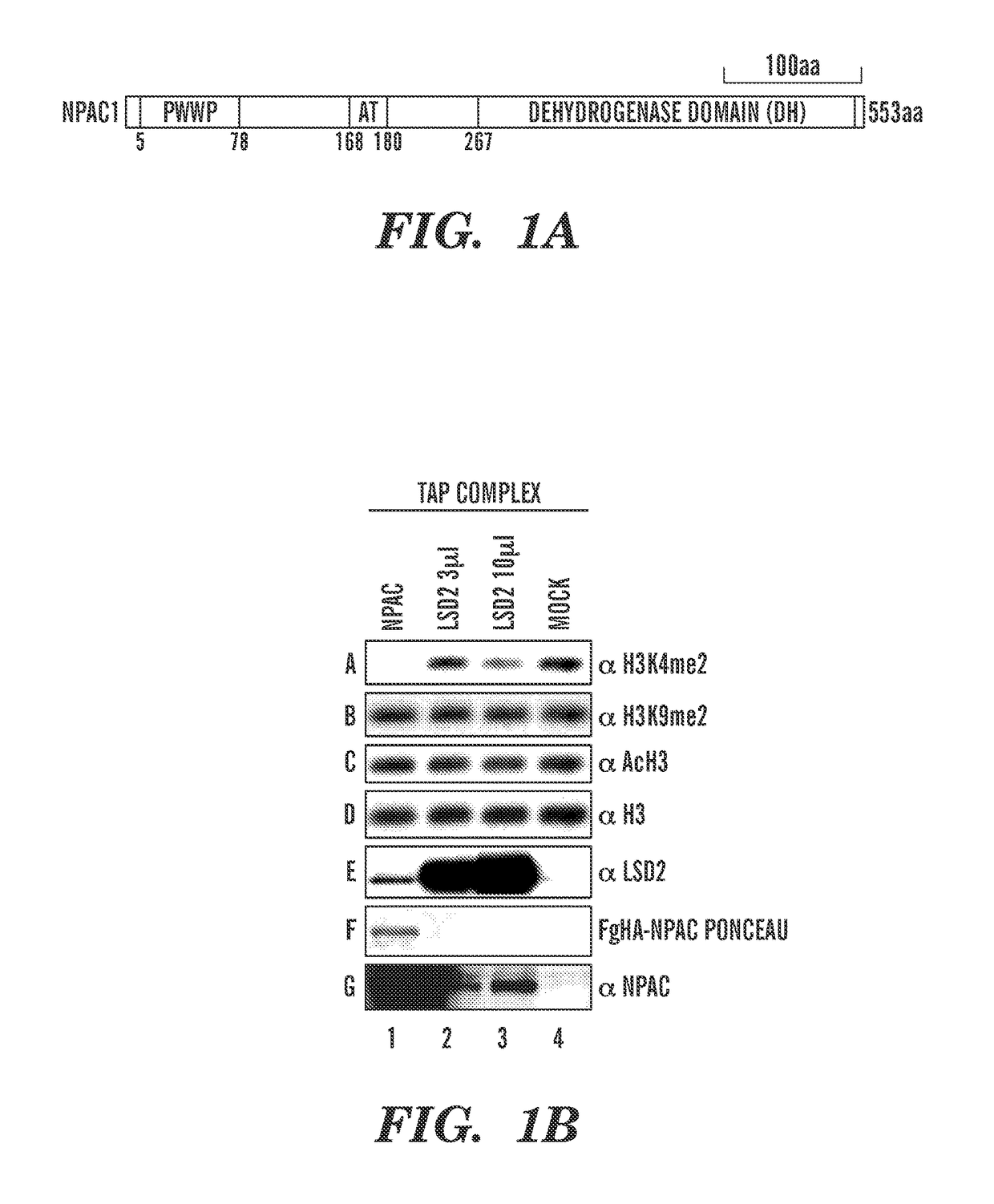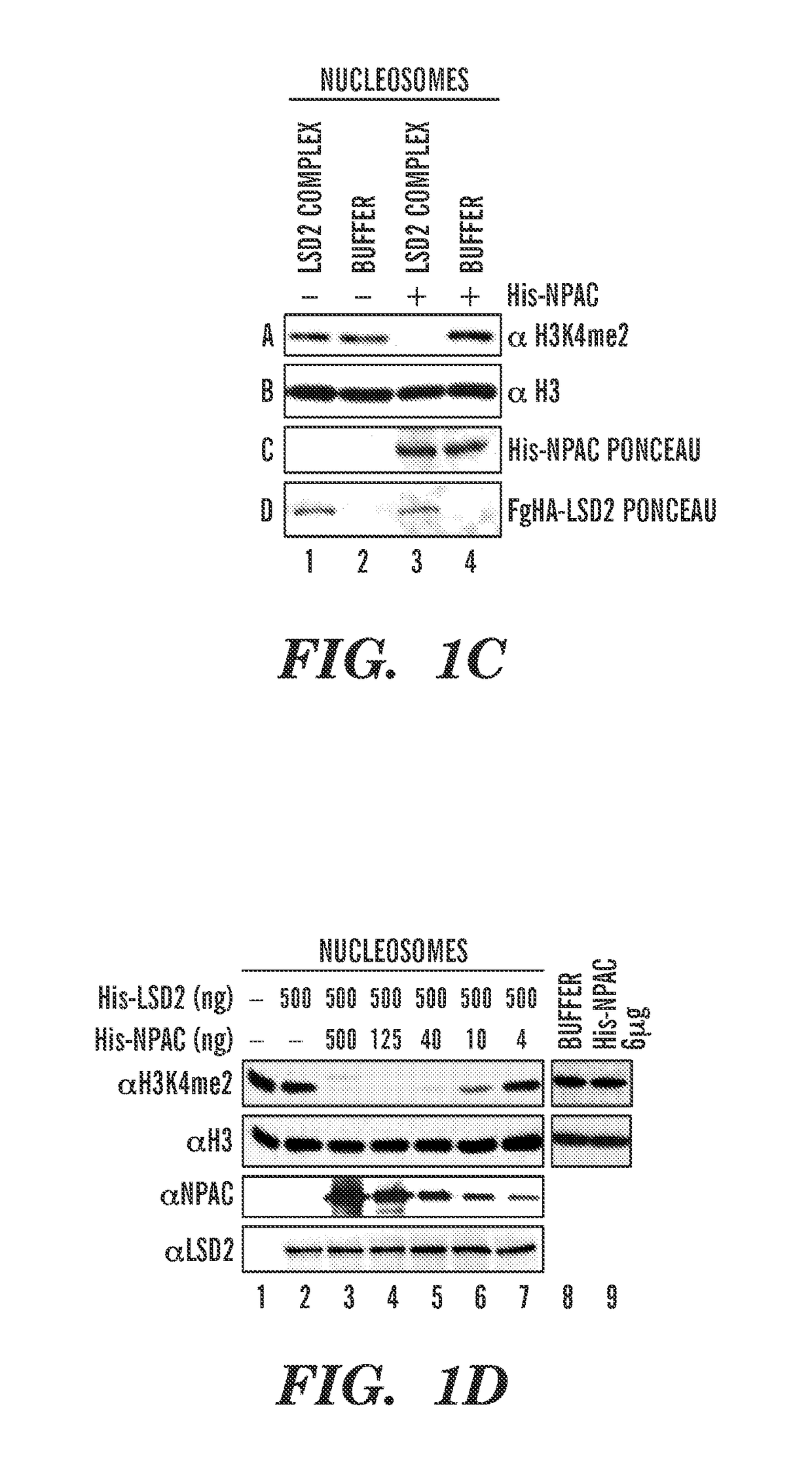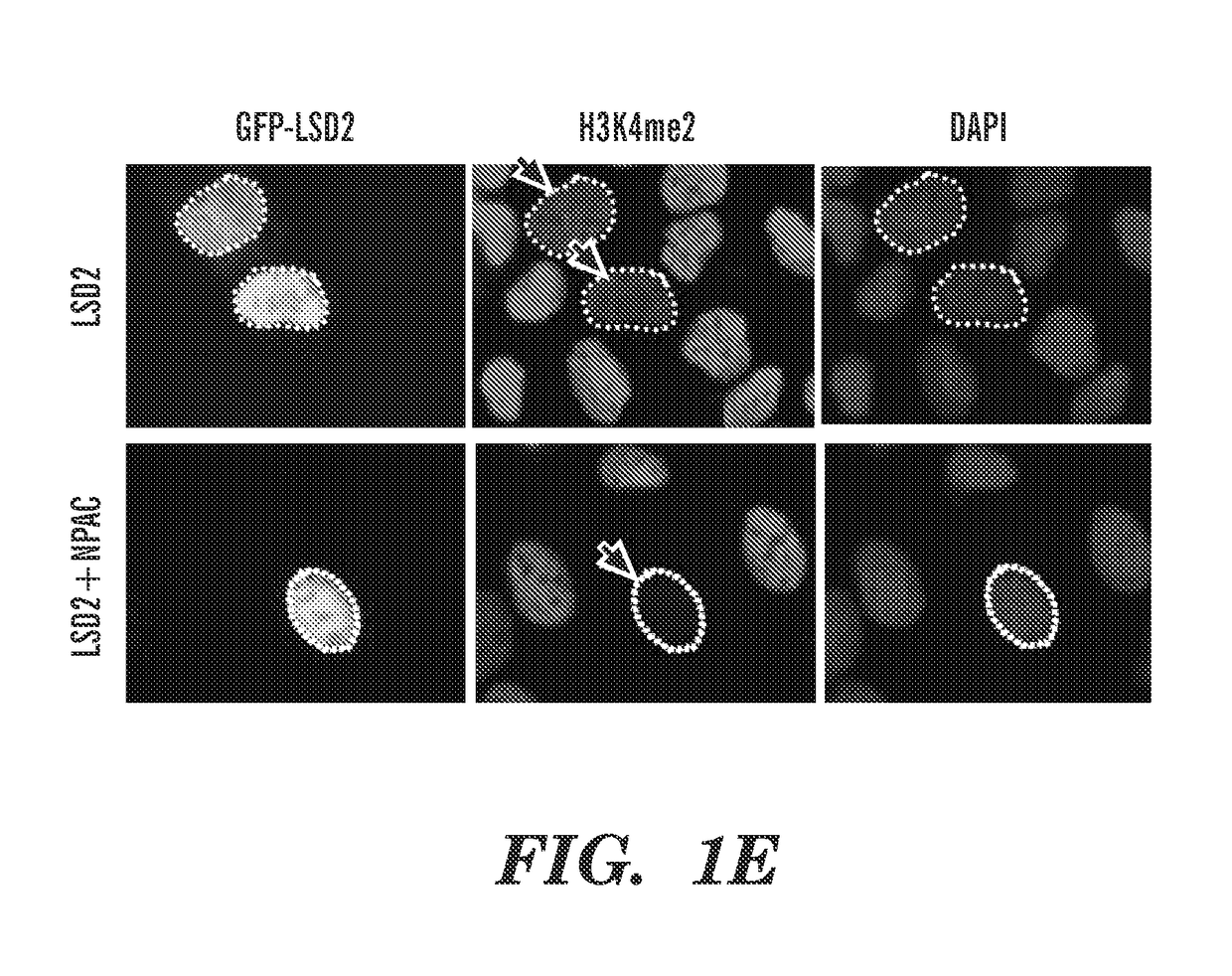Peptides useful for modulating histone demethylase function
a histone demethylase and peptide technology, applied in the field of therapeutic peptides, can solve the problems of elusive molecular details underlying the cofactor-enhanced demethylase activity of lsd1 and other problems, to achieve the effect of stimulating the demethylase activity of lsd2, blocking the interaction between lsd2 and npac, and inhibiting the function of lsd2
- Summary
- Abstract
- Description
- Claims
- Application Information
AI Technical Summary
Benefits of technology
Problems solved by technology
Method used
Image
Examples
example 1
[0179]Dynamic regulation of histone methylation represents a fundamental epigenetic mechanism underlying eukaryotic gene regulation. Yet little is known about how the catalytic activities of histone demethylases are regulated. Here, we identify and characterize NPAC / GLYR1 as an LSD2 / KDM1b-specific cofactor that stimulates H3K4me1 / 2 demethylation. We determine the crystal structures of LSD2 alone, and LSD2 in complex with the NPAC linker region in the absence or presence of histone H3 peptide, at 2.9, 2.0 and 2.25 angstrom resolution, respectively. These crystal structures and further biochemical characterization define a dodecapeptide of NPAC (residues 214-225) as the minimal functional unit for its cofactor activity and provide structural determinants and a molecular mechanism underlying the intrinsic cofactor activity of NPAC in stimulating LSD2-catalyzed H3K4me1 / 2 demethylation. Thus, these findings establish a new model for how a cofactor directly regulates histone demethylation...
example 2
[0293]Productive transcription of eukaryotic genes is an essential cellular process that involves RNA polymerase II (Pol II) and dynamic remodeling of nucleosomes. Increasing evidence suggests that specific histone modifications play key roles in governing this nuclear process. The histone demethylase, LSD2 / KDM1b, functions in active gene transcription by maintaining a repressive epigenetic code at the gene body of actively transcribed genes. However, the molecular mechanism for specifically targeting LSD2 to these loci is unknown. Here we identify a PWWP (Pro-Trp-Trp-Pro) (SEQ ID NO: 63) domain-containing protein NPAC / GLYR1 as an integral component of the LSD2 complex that directly associates with LSD2 in vitro and genome-wide. We show that NPAC requires nucleosomal conformation for stable and specific binding to H3K36me3, and consequently directs of LSD2 to efficiently demethylate H3K4me2 at coding regions of actively transcribed genes. Interfering with components of this histone ...
example 3
[0429]LSD2 is a novel histone demethylase, its biological function has not been fully characterized. LSD2 gene is located at 6p22, a hot spot for frequent deletion, amplification and mutation in cancers (FIG. 23A). Examination of published data of expression profile analyses of cancer specimens revealed LSD2 expression is dys-regulated in certain types of cancers, including breast cancer (Oncomine database). To examine the potential role of LSD2 in breast cancer biology, we compared LSD2 expression levels in 40 basal-like (basal), 39 ER+ high grade (ERHG), 47 ER+ low grade (ERLG) and 30 HER2+ breast cancer specimens to 7 normal breast tissues using microarray analyses. Significant overexpression of LSD2 was observed in basal-like, ER+ high grade and HER2+ breast cancer patients (FIG. 23B). Overexpression of LSD2 in basal-like breast cancer is further confirmed by qRT-PCR (FIG. 23C). Together, these expression analyses suggesting a role of LSD2 in breast cancer biology, potentially f...
PUM
| Property | Measurement | Unit |
|---|---|---|
| distance | aaaaa | aaaaa |
| pH | aaaaa | aaaaa |
| molar ratio | aaaaa | aaaaa |
Abstract
Description
Claims
Application Information
 Login to View More
Login to View More - R&D
- Intellectual Property
- Life Sciences
- Materials
- Tech Scout
- Unparalleled Data Quality
- Higher Quality Content
- 60% Fewer Hallucinations
Browse by: Latest US Patents, China's latest patents, Technical Efficacy Thesaurus, Application Domain, Technology Topic, Popular Technical Reports.
© 2025 PatSnap. All rights reserved.Legal|Privacy policy|Modern Slavery Act Transparency Statement|Sitemap|About US| Contact US: help@patsnap.com



